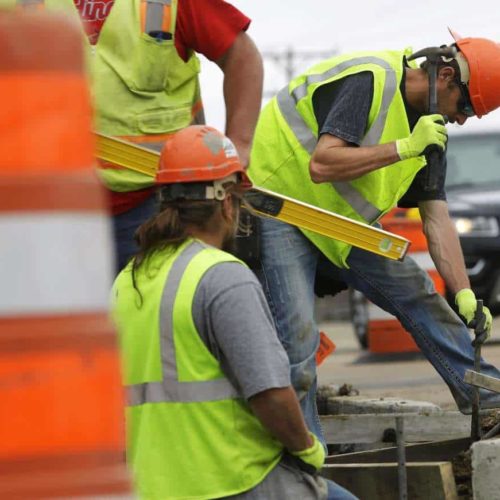Introduction
Workers and taxpayers writ large are shouldering the costs of workplace injuries and illnesses, as the changing nature of work leaves states and employers with increasingly less liability, according to a report released today by the Occupational Safety and Health Administration.
The OSHA report, “Adding Inequality to Injury: The Costs of Failing to Protect Workers on the Job,” notes that employer-provided workers’ compensation insurance benefits cover only 21 percent of the actual costs of a workplace injury or illness, including lost wages, medical expenses and rehabilitation.
Only a fraction of workers apply for or receive benefits, the report says, because of job insecurity, fear of retaliation from employers, or because they don’t know they’re entitled to such benefits. As many as 97 percent of work-related illnesses go uncompensated because symptoms are often linked to workplace exposures long after employment ends, if they are linked at all.
Most of the costs of injuries and illnesses are borne by workers themselves, according to the report. Government programs such as Social Security Disability Insurance and Medicaid cover 16 percent, private health insurance 13 percent.
“By forcing the costs of injury and illness onto workers, their families and the taxpayer, unsafe employers have fewer incentives to eliminate workplace hazards and actually prevent injuries and illnesses from occurring,” the report says. “Under this broken system, these workers, their families and the taxpayer subsidize unsafe employers, increasing the likelihood that even more workers will be injured or made sick.”
The vulnerability is more pronounced in the modern workplace where contract and temporary workers who are often misclassified or assigned to new workplaces more frequently. Employers are often not responsible for insuring temporary workers – that falls to staffing agencies – meaning there’s little incentive to invest in training. The U.S. Bureau of Labor Statistics found that even as workplace deaths declined overall in 2013, deaths among contract workers and Hispanic workers increased.
The report holds relevance for the middle class: even with workers’ compensation benefits, OSHA found, injured workers earn roughly $31,000 less over a 10-year period than they would have if they hadn’t been injured.
The Center for Public Integrity spoke with David Michaels, assistant secretary of labor for occupational safety and health, about the report’s findings.
CPI: The OSHA report says fewer than 40 percent of eligible workers apply for workers comp benefits. What needs to change in order for injured or sick employees to take advantage of the safety net to which they are entitled?
Michaels: Workers with workplace illnesses rarely apply. That’s often because the illnesses occur much later. And doctors don’t make that diagnosis, but even if they do, if a worker is eligible for other health care, medical coverage, they often prefer to get that rather than go through the workers’ compensation medical coverage which is often difficult and demeaning. So that would have to change. In some states, musculoskeletal disorders like carpal tunnel are excluded or very limited in coverage, and so workers just don’t apply because they know they’ll never win. But even for obvious workplace cases, where there are injuries and the injury was caused at work, a large proportion of workers don’t apply for workers’ compensation. I think they look at the system as being a difficult one to maneuver in. There’s been a real attempt to label people who get workers compensation as slackers. And so there’s a stigmatization of getting workers compensation that is totally wrong, and there’s very little evidence that there’s slacking or fraud in workers compensation.
CPI: Low-wage workers tend to face extra barriers in filing for workers’ compensation – greater job insecurity or language barriers, for example. How can those barriers be overcome?
Michaels: I think it’s extremely important for everybody involved in the workers’ compensation system to recognize that until those barriers are eliminated, the system won’t work. There are programs around the country – workers’ centers and others that are helping workers apply for workers’ compensation. The challenge they face, though, is low-wage workers are always afraid for their jobs. And as long as they have that fear, they’re going to be hesitant to apply for workers’ compensation. I think immigration reform will help this and President Obama’s effort to ensure that workers who are here are able to stay here and come out of the shadows will allow a lot of workers who are getting injured now to apply for workers’ compensation and not fear having immigration called on them.
CPI: Despite an overall decrease in work-related deaths, the number of contractors and Hispanic workers killed on the job has increased. Can you explain why?
Michaels: Non-English speaking workers certainly are at greater risk. Worker who don’t have legal status in the United States are more vulnerable because they feel they can’t complain. We’ve been in situations where a worker’s been hurt and we ask an employer, ‘Why wasn’t that worker trained in how to do that job safely?’ They said, ‘Well, the worker doesn’t speak English.’ We tell employers, ‘If you hire a worker and you have to train them, you have to train them in a language and vocabulary that they understand.’
CPI: What’s driving the changes in state workers’ compensation programs that force workers to shoulder these costs alone in some cases?
Michaels: This race to the bottom is being driven by employers in every state who see an opportunity to have lower costs. They point to neighboring states because they give greater benefits to workers who are injured. So if we want to compete for employers to move to our state, we have to lower our cost. I haven’t seen studies that actually show that employers move because of workers’ compensation costs, but it’s an excuse that’s being made. So I think state legislatures around the country are looking at this and just cutting back on benefits the workers receive.
CPI: Can we expect to see changes in who bears the cost of workplace injuries and illnesses? What would it take to bring about such changes?
Michaels: Right now, certainly, the trend is in the wrong direction. Until that is reversed, the costs of workplace injuries and illnesses will be shifted to workers’ families and taxpayers. And so [state legislatures are] going to have to look at the functioning of their workers’ compensation systems and see that the way they work currently is very much unfair and penalizes the victims of the injuries rather than the employers who are responsible for preventing the injuries from occurring.
CPI: The OSHA report notes that as more dangerous jobs are outsourced to temporary workers to save employers money, there’s a diminishing incentive to invest in proper training and safe working conditions. What will it take for employers to stop using temporary workers as a way to cut costs and avoid taking adequate safety measures?
Michaels: OSHA’s position is all workers deserve protection, and it’s the responsibility of all employers to provide a safe workplace. And if all workers are protected, then we don’t have to worry about who’s bearing the costs, and that’s really been our focus. We have an alliance with the American Staffing Association providing information on what we call recommended practices for when most employers hire temporary workers. There are rules they have to follow. And that information is getting out. We treat the host employer and the staffing agency as joint employers. They’re both responsible for making sure all workers in the workplace are safe.
Read more in Inequality, Opportunity and Poverty
Workers’ Rights
Job-related deaths among Latino, contract workers rose in 2013
Final numbers released by the Bureau of Labor Statistics show a total of 4,585 people died on the job that year
Workers’ Rights
Chairman of ‘grossly mismanaged’ Chemical Safety Board resigns
Rafael Moure-Eraso had been under pressure to quit from lawmakers and others



Join the conversation
Show Comments
I’ve been using Aircraft brand stripper for 20 years. It is the most effective and reliable product in my body shop for its purpose. I tried it the other day without this ingredient. It is the most useless stinky horrible stuff I’ve ever seen. I don’t know what this company is going to do now. They are definitely going to go bankrupt. I suppose it’s for the best , but what a bummer. Instead of spending 30 minutes stripping the old paint off of a hood, I spent three hours sanding it off and using tons of electricity and sandpaper.… Read more »